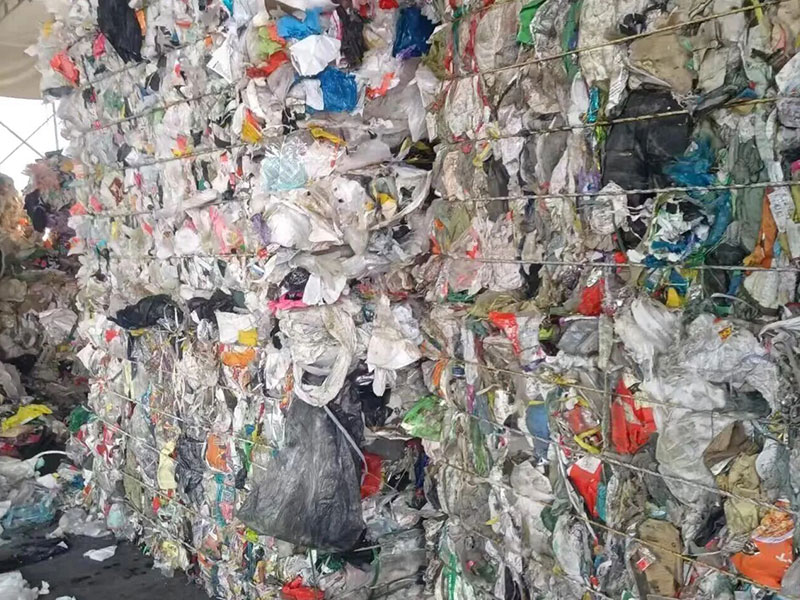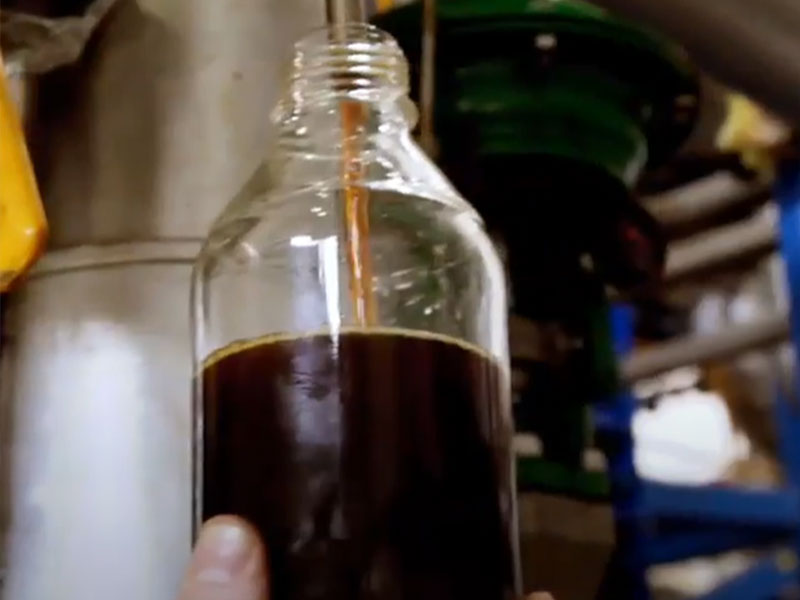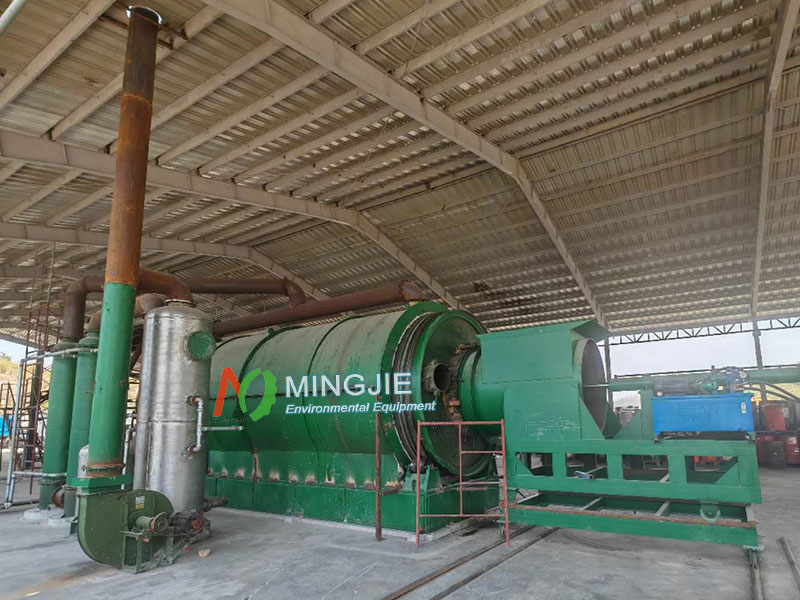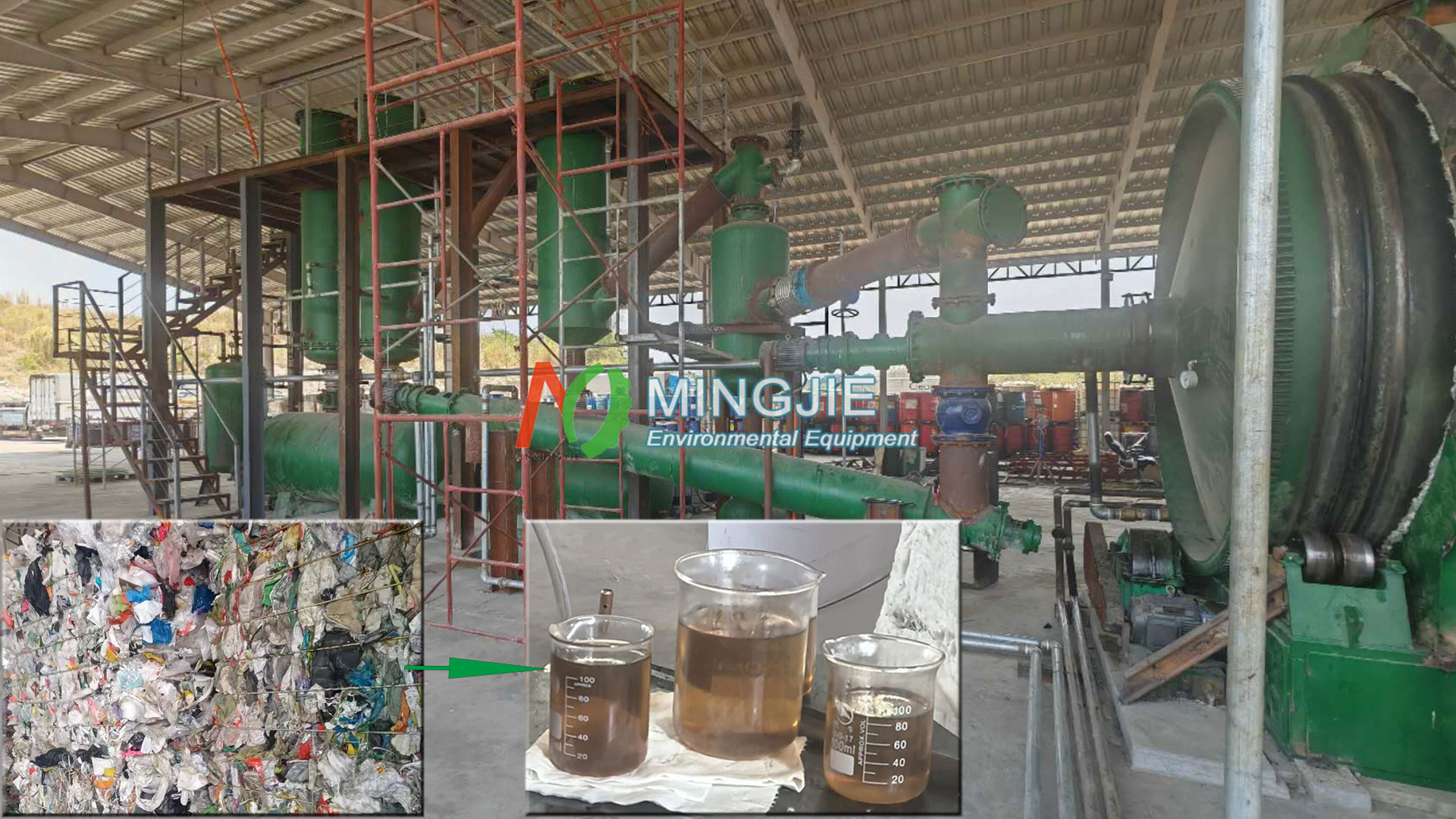Precise temperature control is one of the most critical technical aspects in the production of pyrolysis oil from plastic waste. The pyrolysis temperature plays a decisive role in the oil yield and product quality of waste plastics. Different types of plastics, due to differences in their chemical structure and molecular composition, have their own unique optimal pyrolysis temperatures.
The optimal pyrolysis temperature for polyethylene (PE) is typically between 400℃ and 500℃. Within this temperature range, PE molecular chains can break down and recombine relatively fully. It has a high efficiency in converting plastic into fuel oil, with an oil yield of 90%-95%.
The optimal oil yield for polystyrene (PS) is relatively lower, approximately between 320℃ and 360℃. When the temperature is within this range, PS can pyrolyze well, producing pyrolysis oil from plastic rich in styrene and other components. If the temperature is too high, exceeding the optimal range for PS, it may lead to over-pyrolysis. This will produce excessive small-molecule gases, reducing the oil yield. Simultaneously, the quality of the oil will also be affected, potentially containing more impurities and unstable components.

However, in actual production of pyrolysis oil from plastic, the waste plastics processed are often a mixture of multiple types. This mixed plastic situation makes precise temperature control extremely difficult. Since different plastics have different optimal pyrolysis temperatures, it is difficult to find a single temperature that can meet the ideal pyrolysis conditions for all plastics.
There is no single optimal temperature for the pyrolysis of mixed plastics. It’s more about finding a balance between product quality, yield, and energy consumption. Typically, this temperature range is between 350°C and 600°C. However, the specific temperature setting can vary significantly depending on the type of plastic and the target product.
To maximize pyrolysis oil from plastic waste, maintaining the temperature between 400°C and 550°C is ideal. Too low a temperature leads to incomplete pyrolysis, resulting in products containing large amounts of waxy substances. Too high a temperature causes further pyrolysis of the oil into combustible gases with even lower yields.

Precautions When Obtaining Pyrolysis Oil from Plastic
In the process of obtaining pyrolysis oil from plastic waste, preventing gumming and waxing is crucial to ensuring the smooth progress of the pyrolysis reaction.
During the pyrolysis process, highly chemically reactive molecules in plastics readily polymerize, forming a sticky, viscous substance. Once formed, this substance adheres to the inner walls and pipes of the pyrolysis refining equipment.
When plastic oil vapors enter the downstream oil vapor pipeline, another waxing problem arises. When the temperature drops below 18℃, the waxy components in the plastic oil gradually solidify. These solidify and adhere to the inner walls of the condensation equipment and pipelines. Waxing causes pipelines to narrow, severely impacting the equipment’s pressure system. This not only shortens the pyrolysis machine lifespan but can also lead to safety accidents such as pipeline rupture.

How to Solve the Problems in Plastic Pyrolysis?
To address gumming, periodic shutdowns for desizing are necessary. This not only consumes significant manpower, resources, and time but also increases production costs.
Removing PET and PVC is essential. The oxygen-containing structure of PET readily generates cross-linking products, leading to coking. The HCl produced by PVC corrodes equipment and catalyzes the coking reaction. Simultaneously, removing labels, adhesives, food residue, and other impurities is also crucial, as these are precursors to coking. Breaking the plastic into small, uniform fragments greatly improves heating uniformity, preventing the outer layer from overheating and coking while the inner layer remains intact.
To prevent waxing, a series of measures are typically required. These include insulating pipelines and equipment to ensure the oil temperature remains above the wax’s melting point; adding suitable additives to alter the wax’s crystal structure and prevent its aggregation and adhesion; and optimizing the process flow to reduce the oil’s residence time in low-temperature environments. However, these measures have limitations in practical applications and require comprehensive consideration of various factors.
Mingjie batch pyrolysis equipment is equipped with a dewaxing device, effectively preventing pipe blockage in the production of pyrolysis oil from plastic waste.




